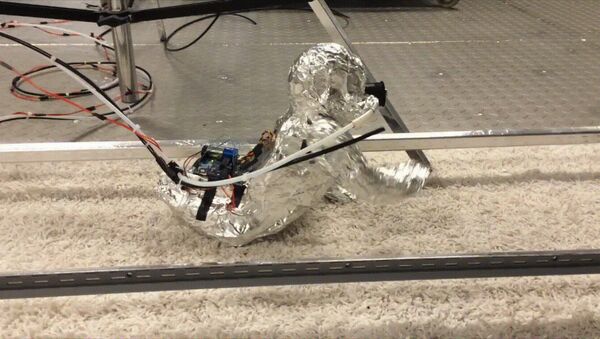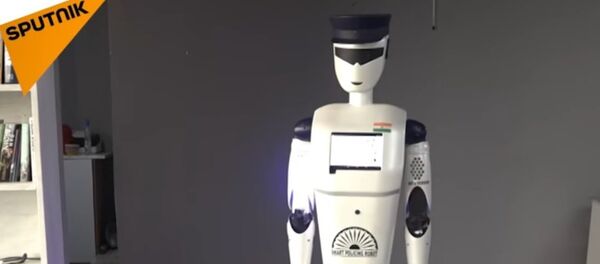The crawling robot is helping scientists from Purdue University in Indiana understand how much “bio-junk” such as dirt, pollen, skin cells and bacteria infest the surface of floors on which infants crawl.
When babies start to crawl around their homes their mouths and noses are very close to the ground and the new study aims to analyze the indoor debris environment and how much infants inhale these particles from a crawling baby’s perspective.
The somewhat eerie looking robot which will crawl all the way into your nightmares was made from a baby doll. The scientists transformed it into a legless, foil wrapped robot that drags itself using its arms.
As the baby robot crawled over sections of debris-rich surfaces the researchers collected and analyzed the particle clouds that rose up around it.
“For an adult, a significant portion of the biological particles are removed in the upper respiratory system, in the nostrils and throat,” lead researcher Brandon Boor said in a statement published in the journal Environmental Science and Technology.
“But for very young children, they more often breathe through their mouths, and a significant fraction is deposited in the lower airways – the tracheobronchial and pulmonary regions. The particles make it to the deepest regions of their lungs,” he added.
The amount of pollen, bacteria, dirt inhaled by infants was therefore much higher than the amount an adult would breathe in, by about four times per kilogram of body mass, the publication wrote.
Although it might sound like bad news, it’s possible that this actually helps babies build up resistance to diseases, as having to face a variety of microbes can actually lower things like asthma, helping to develop the immune system in infants.
“Many studies have shown that inhalation exposure to microbes and allergen-carrying particles in that portion of life plays a significant role in both the development of, and protection from, asthma and allergic diseases," Boor said.





